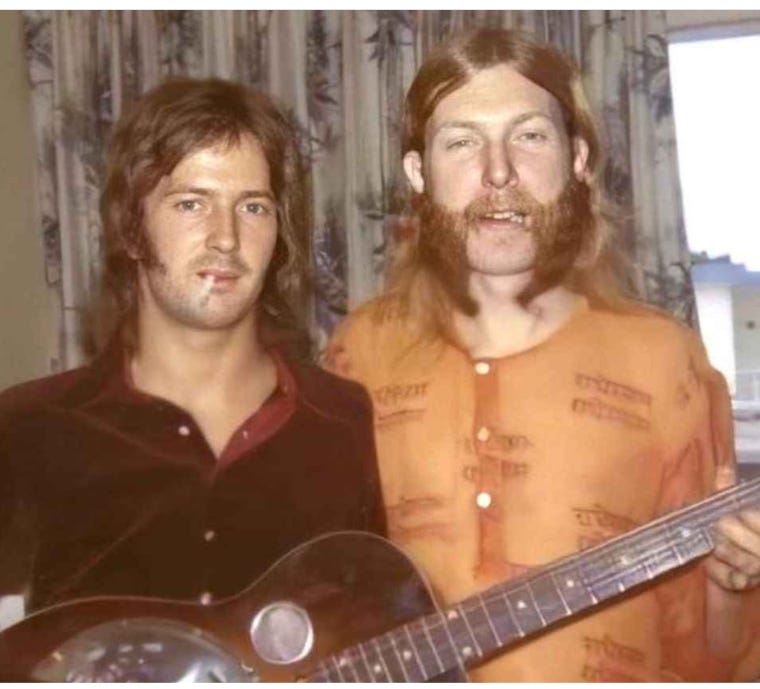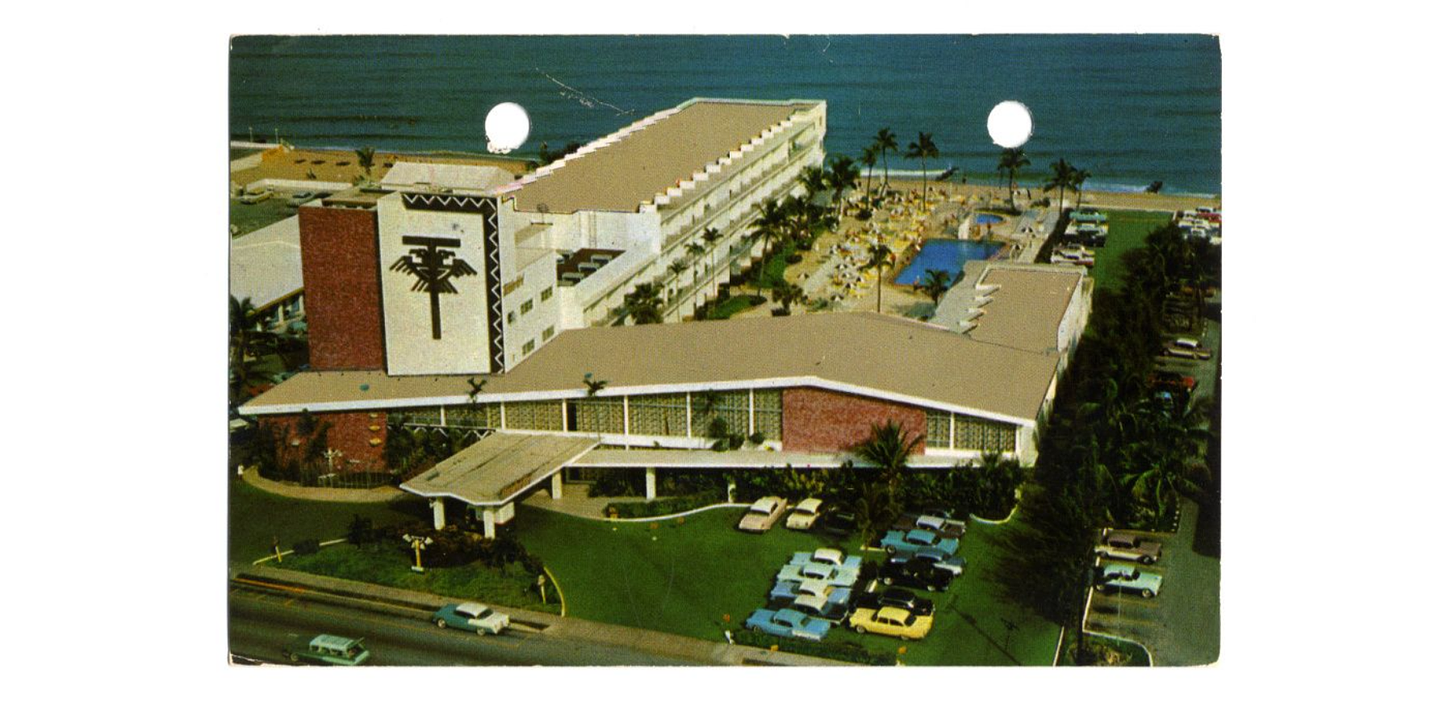The Joys of Research Rabbit Holes
My day with Allman Brothers Band, the University of Miami digital collection, and a Lewis Carroll misquote.
I’ve been spending a lot of time curating lately. It’s one of many tactics I learned from Questlove’s excellent Creative Quest, a book that transformed how I thought about myself as a creative person. He talked about “organizing stuff” (my words) as a way to free the mind to tackle creative ideas.
I needed to sort through a backlog of video in the six months since the launch of Play All Night! I have spent much of the past week updating the Long Live the ABB YouTube channel, which is slowly gaining some momentum. (Seriously, this video of me at my alma mater has 20,000 views as of today.)
In addition to adding chapter titles, I also add detail in the descriptor: information on the venue, my interviewer, and anything else I think is pertinent to the conversation.
Today, I was editing video from a talk in Naples, Florida. I thought about my drive to the gig along from Miami through the Everglades along the Tamiami Trail, U.S. Highway 411, which Dickey Betts immortalized in “Ramblin’ Man.”2
I was in Miami only briefly, where I stopped at Criteria Studios and snapped a few photos. I trekked over to the infamous Thunderbird Motel on Miami Beach, site of my favorite photo of Duane and Jaimoe ever. It’s also where Duane stayed while recording Layla with Derek & the Dominos.
I was looking up details on the Thunderbird Motel when I fell into the research rabbit hole.
I first looked up this photo of Duane and Jaimoe. I searched for photos of Duane and Eric Clapton from the Thunderbird (all pretty low-resolution).
From there, I looked up the address of the Thunderbird Motel (18401 Collins Ave, Miami Beach). It’s now a Wyndham property, after a significant renovation of the original 1954 building.
Even more interesting than its classic mid-century design, architect Norman Giller's firm introduced the concept of two-story motels: the precursor to today's resort motel. (That's how the motel touted itself in this brochure.)3
Next, I found this postcard in the digital collections of the University of Miami. From there, I typed “Allman” in the search box. And all hell broke loose.
Turns out, The Hurricane, UM’s newspaper, covered the Allman Brothers a lot in the 1970s and early 1980s. A LOT.
Entertainment editor Jim Fishel was one of the band’s earliest converts. He’d surely seen at least one of the band’s shows barnstorming Florida in 1969 and 1970 and/or owned their eponymous4 debut album when he wrote of an upcoming May 1970 show:
“The Allman Brothers Band has really been getting it together in the last few months. This band under the direction of guitarist extraordinaire Duane Allman will knock the audience out.”
Later that year, Fishel witnessed sessions for Idlewild South at Criteria Studios. His review called the Allman Brothers Band
“one of the most technically and musically pleasing albums of the year. Probably the most underrated group in rock music today, the group feels equally at home doing rock and blues, sometimes creating a musical fusion between the two.”
He also saw something a lot of folks saw in the ABB, they were consummate professionals.
“[They are] musicians extraordinaire, musicians’ musicians, since they have all served apprentice terms in their various careers with well-known bands and recording artists. Part of the success of the Allman Brothers Band lies in the fact that they play as a musical unit, even though they all have the potential to boom out with their own powerful solos at any given time.”
Fishel clearly *got* what the ABB were trying to do. His observations are the kind peppered throughout Play All Night! Duane Allman and the Journey to Fillmore East.
I found all kinds of other fun stuff that I’ll surely turn to something on down the road.
a glowing review of a show at the band’s nadir: a January 1982 show in Miami shortly before the band’s second breakup (soon after this show from Gainesville that’s long-circulated).
a 1983 note culled from Rolling Stone called “Did Arista Break Up the Allmans?”
lots of pieces on the UM concert scene via student activities board, something I've begun researching just a bit.5
There were also several articles on Sea Level, Jaimoe’s band with Chuck Leavell and Lamar Williams of the ABB. That led me to revisit the track “Left Turn” by We Three, which they were calling themselves at the time.
I ended up spending the day collating all of those new resources. Ultimately I added nearly three-dozen to my database. What I’ll do with them, I really don’t know. I’m learning to sit with projects more, let my creativity percolate a little bit.
Turns out I’ve been misquoting the Cheshire Cat all my live: “If you don’t know where you’re going, any road will get you there.”
Lewis Carroll’s original phrase was much more clever:
“Would you tell me, please, which way I ought to go from here?”
“That depends a good deal on where you want to get to,” said the Cat.
“I don’t much care where–” said Alice.
“Then it doesn’t matter which way you go,” said the Cat.
“–so long as I get SOMEWHERE,” Alice added as an explanation.
“Oh, you’re sure to do that,” said the Cat, “if you only walk long enough.”
Lewis Carroll, Alice in Wonderland
The whole thing was a reminder that the writer’s life is as much about the journey as the destination. Thank you for coming along for the ride.
P.s: If you enjoyed this read, please share this post with at least one person. I’ll make it easy for you and put a button right here:
U.S. Highway 41 morphs into Vineville Avenue in Macon. The Allman Brothers’ communal home, the Big House was at 2321 Vineville Avenue, Macon. It’s now a museum. #mushroommagic
The band’s top-charting hit, #2 in 1973, kept out of the top spot by Cher’s “Half-Breed.” Gregg and Cher married in 1975.
“Up until then, motels only had one floor, since the whole idea was that you could drive your car right up to the room. My clients weren't sure if people would walk up an extra flight. It turned out they would—the place was full from the first season.” Norman Giller in Judy Cantor, “Kitsch Highway,” Miami New Times August 3, 1995, www.miaminewtimes.com/arts/kitsch-highway-6361971?showFullText=true.
I only learned the definition of eponymous—typically “self-titled” in music writing—within the last 5 or so years. Turns out, reading super- (too?) fast also means overlooking context clues. Ya tu sabes.
Student activities boards on college campuses in the 1960s and 70s were truly significant to the rock music scene, the Allman Brothers Band in particular.







Great post, as always! Love the Thunderbird Motel photo and info.
Bob, we are the same kind of music & history geeks...and the combination is deadly. I follow trails all the time, not knowing where they will go and find some of the coolest stuff...like this and your writing. Keep it up, it's fun, entertaining and illuminating from here. You've been editing video, which is what I've been trying to get to all day...as to organization, it can make or break a project. I told someone years ago that I was as much a librarian and researcher as video editor. Cheers & time for some tequila...it's almost 5 "somewhere". By the way, Stan Kenton's tour bus said "Nowhere"...I thought "everywhere" or "anywhere" was really much more appropriate....when Jaimoe found out that I had done audio for Kenton's big band and that I knew who Peter Erskin was the conversation got a lot more in depth.